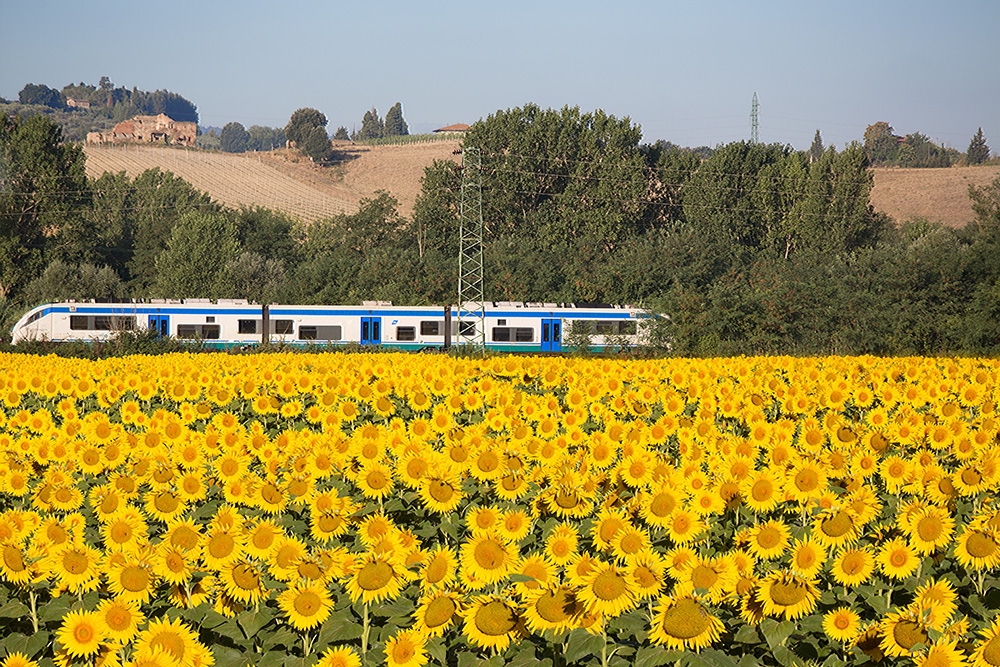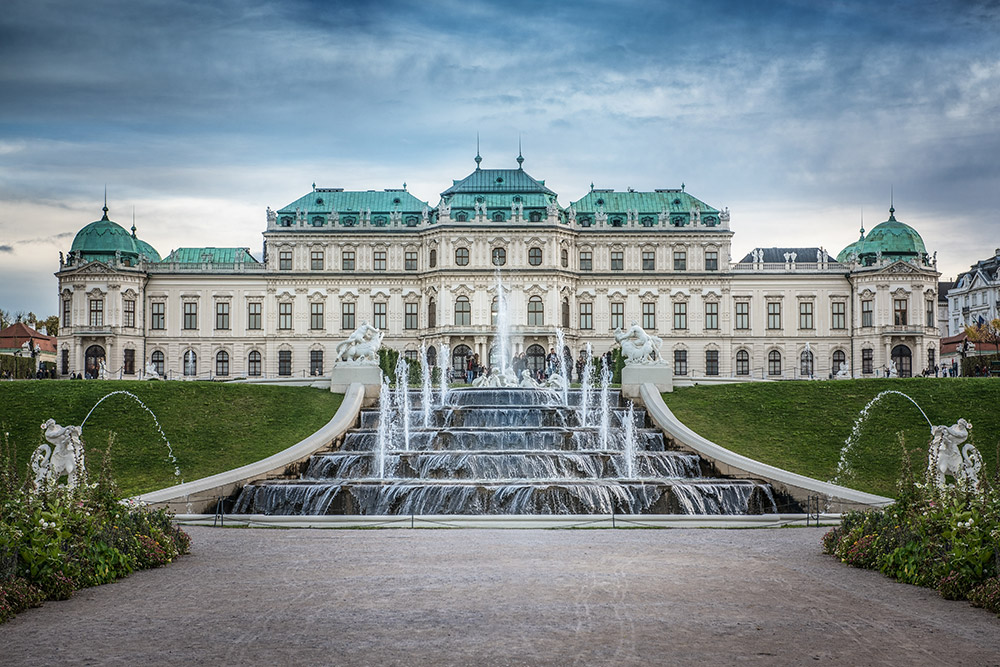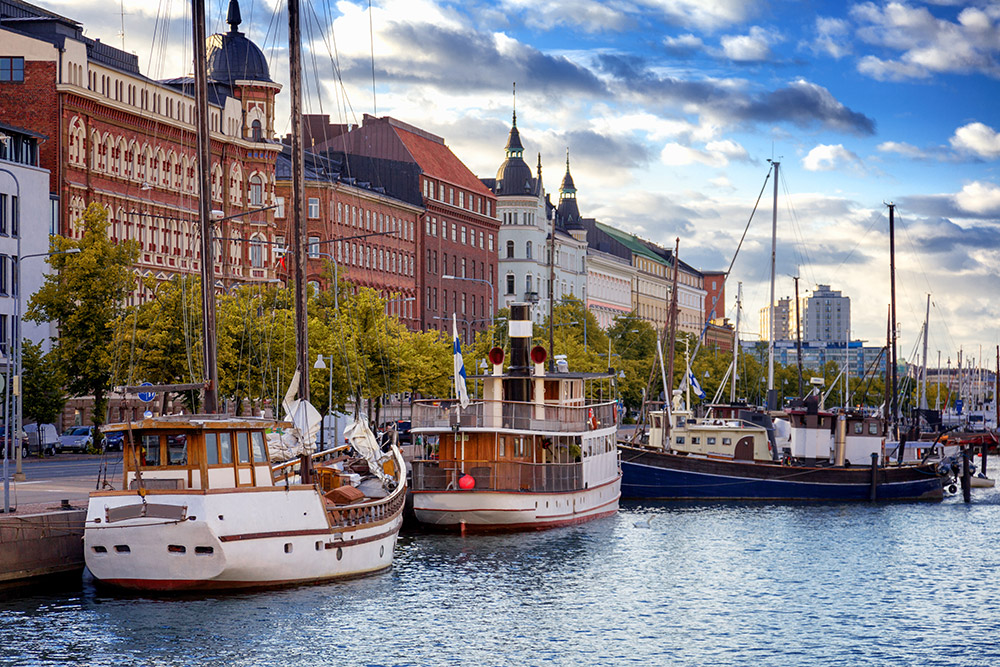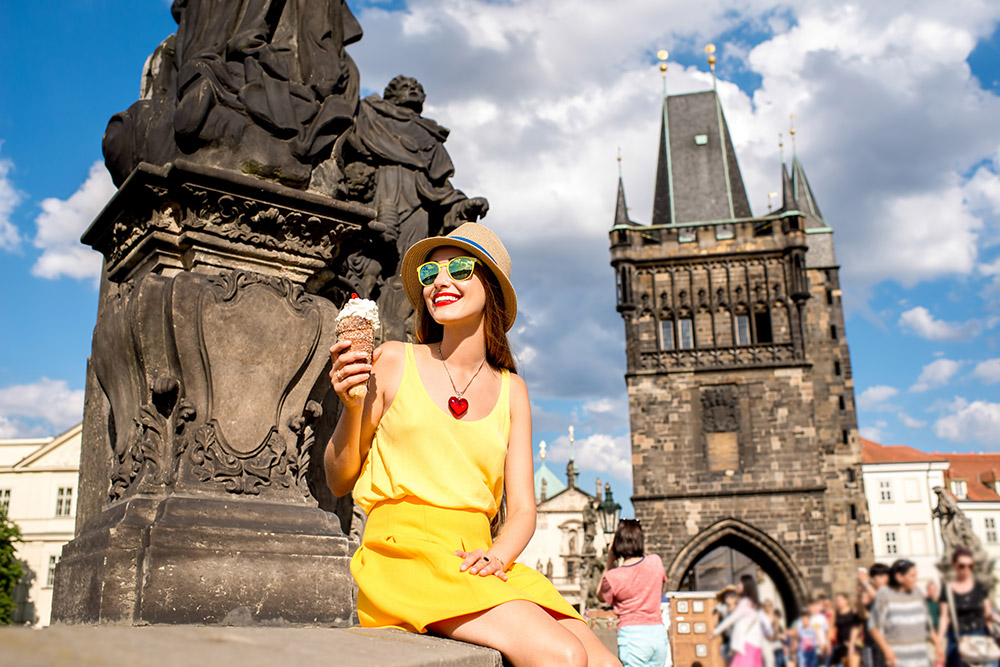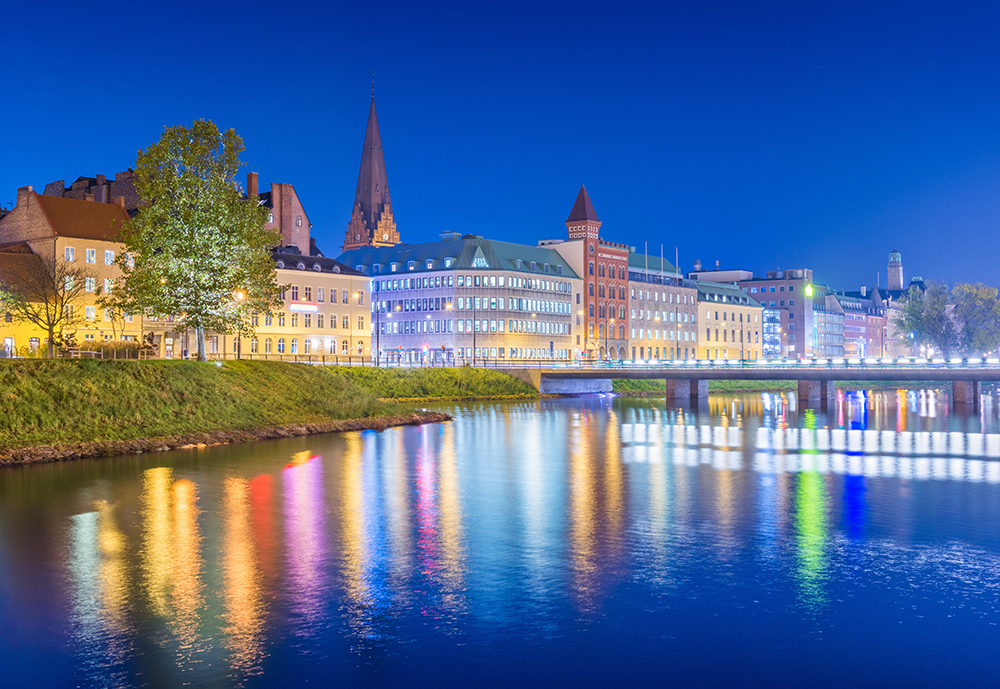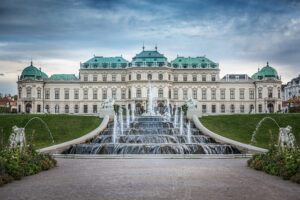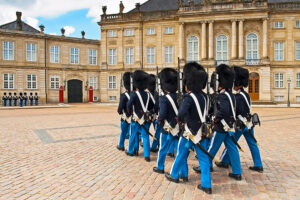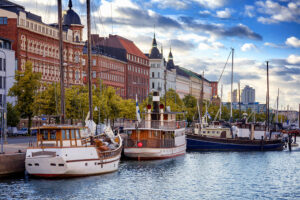Please note that the travel durations provided in the itinerary are averages and may be subject to variations based on your chosen travel route and number of stops. For up-to-date information about the availability of public transportation, it is recommended to check privately according to your selected route. In many cities, there is more than one train station, so it’s essential to confirm in advance the departure and arrival stations for the relevant train.
Additionally, if you’re traveling by train for a brief visit to a city and plan to stay overnight elsewhere, you’ll need to arrange for luggage storage at the train station. It’s advisable to explore local storage options at each of these destinations.
The proposed route is circular, starting and ending in Rome. Duration of the trip: 19 days.
Popular itinerary for Exploring Italy by Train:
Day 1
Train from Rome to Naples, approximately 1 hour and 15 minutes. Spend the night in Naples.
Naples is a renowned historical center and a UNESCO World Heritage site. The historic castle, Castel dell’Ovo, is located on its coast and offers panoramic views of the Gulf of Naples. A leisurely stroll through Naples’ historic center (Centro Storico) takes you through a maze of streets lined with historic churches and bustling markets. Visit Piazza del Plebiscito, the Royal Palace, and the Naples Cathedral. Dedicate two to three hours to the National Archaeological Museum, boasting an impressive collection of Greco-Roman artifacts, sculptures, mosaics, and treasures from the ancient cities of Pompeii and Herculaneum, both destroyed in the eruption of Mount Vesuvius in 79 AD. Naples is known for its delicious street food, including the famous Neapolitan pizza, Sfogliatelle (a sweet pastry), and a variety of seafood dishes. If you are an art lover, consider a visit to the Capodimonte Royal Palace and Museum, which houses an extensive collection of art and historical treasures, including masterpieces by Caravaggio and Raphael.
Day 2
Train from Naples to Sorrento with a stop in Pompeii via the Circumvesuviana train, approximately 30 minutes. Spend 2 nights in Sorrento.
Pompeii’s train station is conveniently located near the entrance to the famous ruins of the city. Once a thriving Roman city and a center of commerce, culture, and industry, Pompeii faced a tragic fate when Mount Vesuvius erupted violently in 79 AD, covering it in a thick layer of volcanic ash. This catastrophic event resulted in the sudden destruction of the city and the tragic loss of thousands of lives. Pompeii remained buried and forgotten for centuries until its rediscovery in the mid-18th century. Subsequent excavations revealed a remarkably preserved city, highlighting its streets, structures, and even remnants of its residents and animals, and providing a detailed glimpse into the social, economic, and cultural life of its inhabitants.
From Pompeii to Sorrento, continue on the Circumvesuviana train, making several stops en route to the final station: Sorrento. If you arrive in the evening, enjoy the extraordinary sunset, considered one of the most beautiful in the world. Take a stroll through the historic town center and wander through its charming streets that overlook the open sea. Sorrento Marina Piccola, located at the base of the city, provides access to the beaches of the island of Capri.
Day 3
Boat ride from Sorrento to Capri, approximately 1.5 hours.
Boats to Capri depart at varying frequencies depending on the season. It’s advisable to book in advance and carefully note the schedule, especially for the return journey. Get an early start to ensure a full day of exploration.
When you arrive in Capri, you can explore by boat or head to the iconic Blue Grotto (La Grotta Azzurra). This renowned sea cave features captivating blue waters illuminated by sunlight filtering through underwater openings. Check in advance whether sea conditions allow entry to the cave by rowboat—it is an enchanting experience.
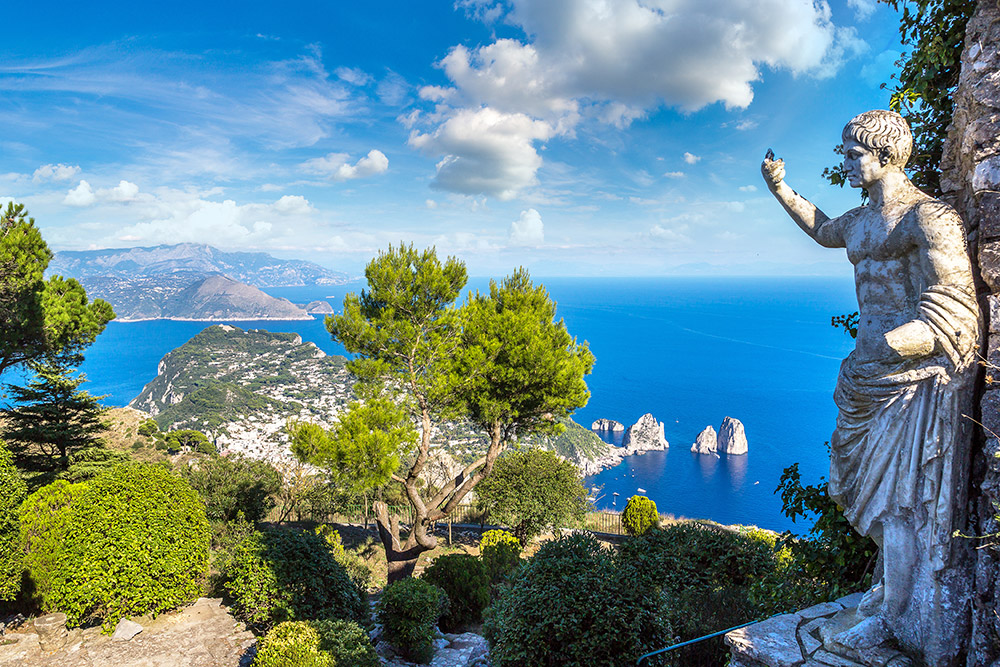
Next, venture to Anacapri, where a visit to Villa San Michele awaits. This stunning villa perched on a cliff offers a panoramic view of the Gulf of Naples. The villa’s beautiful gardens are adorned with Roman and Egyptian artifacts collected by the physician Axel Munthe, who built the villa in the early 20th century.
The town’s walking path leads on one side to a two-seater cable car ascending to the mountaintop above houses, orchards, and vineyards. The breathtaking view from Monte Solaro provides a panoramic perspective. On the other side, the walking path leads to the entrance gate and the “Phoenician Steps,” 921 steps descending to the marina of Capri.
In the evening, return to Sorrento, the city of lemons, and take the opportunity to savor the delightful flavor of Limoncello.
Day 4
Bus from Sorrento to Amalfi (full day excursion). Spend the night in Naples.
The renowned route promises a unique and unforgettable experience, captivating travelers with its breathtaking views of rocky cliffs, picturesque villages, and a sea of azure blue along the Amalfi Coast. The trip is a visual feast, with each twist and turn revealing a new landscape as the route leads through charming coastal towns like Positano and many others. The coastal city of Amalfi combines historical charm and breathtaking beauty. The Amalfi Cathedral and the Cloister stand at the center of the city’s charming old town, with the dramatic cliffs and crystal-clear waters creating a stunning backdrop. Savor the local cuisine, known for fresh seafood and lemon-infused dishes, and explore shops featuring handmade traditional products of the region.
Days 5 and 6
Train from Naples to Rome, approximately 1 hour, 15 minutes. Spend 2 nights in Rome.
Rome, the capital of Italy, is a destination bursting with possibilities. Offering a wide range of archaeological sites, historical landmarks, museums, markets, cultural venues, and leisure spots, you’ll need at least two days to fully enjoy its diverse attractions. One of Rome’s highlights is the Colosseum, a Roman amphitheater also known as the Flavian Amphitheatre, built around 70-80 AD. This iconic venue was home to gladiator fights, hunts, and other performances that captivated audiences of up to 80,000 people.
The Roman Forum, the center of political, religious, economic, and social activities in ancient Rome, features important structures such as temples, government buildings, and public spaces. Here, you’ll encounter the Arch of Constantine and the Arch of Titus, while the outer forum offers a view of the Column of Trajan.
Capitoline Hill, historically significant and a symbol of the ancient city’s political and religious center, hosts the Piazza del Campidoglio, designed by Michelangelo. The bronze statue of Emperor Marcus Aurelius is its focal point, and the Capitoline Museums are located in close proximity.
Piazza Venezia and the Altare della Patria monument, also known as the Victor Emmanuel II Monument, commemorate the first king of Italy and the Unknown Soldier’s tomb, respectively.
The Pantheon, originally constructed as a Roman temple around 120 AD, is notable for its distinctive dome housing the “oculus” – a central open space.
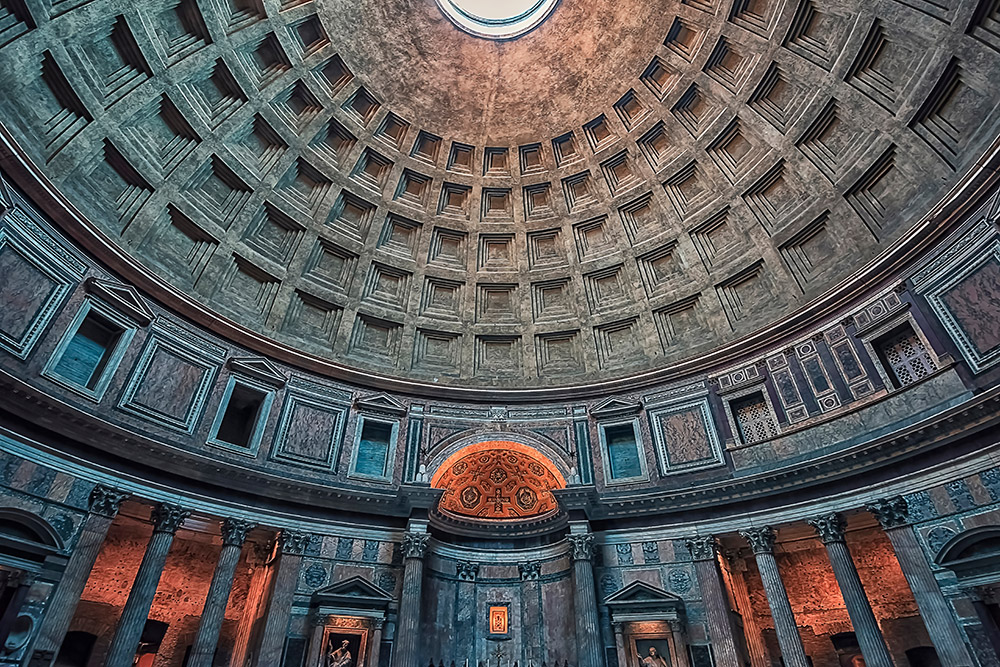
Vatican City, an independent city-state within Rome, serves as the spiritual and administrative center of the Catholic Church, and its highlights include St. Peter’s Basilica, the Vatican Museums and the Sistine Chapel, adorned with breathtaking frescoes by Michelangelo, including “The Creation of Adam” and “The Last Judgment.”
Castel Sant’Angelo, originally Emperor Hadrian’s mausoleum, offers panoramic views of Rome from its rooftop terrace.
Piazza Navona, a bustling square known for its unique Baroque architecture, houses the Fountain of the Four Rivers by artist Giovanni Lorenzo Bernini.
Trevi Fountain, a Baroque masterpiece in the heart of Rome, features a sculptural composition depicting Neptune and mythical creatures. Tradition holds that visitors throw coins into the fountain, symbolizing good luck and the hope for a future return to Rome.
The Spanish Steps, an 18th-century monumental stairway, serve as a popular meeting place with cultural significance. At the foot of the steps is the Barcaccia Fountain, created by artist Giovanni Lorenzo Bernini. Nearby is the Keats and Shelley House, commemorating the lives and works of the beloved poets.
Piazza del Popolo, featuring an Egyptian obelisk, twin churches, and a central fountain, showcases an open space and architecture including the Porta del Popolo gate, blending ancient and Renaissance elements. Above the square is a terrace offering views of both the square and the city.
Villa Borghese gardens, an expansive public park renowned for its natural allure, sculptures, and cultural attractions, was originally the private estate of the Borghese family. Within these gardens, you’ll discover meticulously landscaped areas, winding paths, museums, and sculptures. A visit to the Borghese Gallery, home to an impressive collection of sculptures, paintings, and artworks, is highly recommended.
Do not miss Santa Maria del Popolo Church, where you can admire the legendary painting by Caravaggio, “The Conversion of Saint Paul.”
Day 7
Train from Rome to Orvieto, approximately 1.5 hours. From there, continue for another 2.5 hours to Florence. Spend 1 night in Florence.
Orvieto is a picturesque hilltop town, weaving a captivating tapestry of history, culture, and natural beauty. The train station is conveniently located close to the funicular, providing direct access to the ancient city. The highlight is the awe-inspiring Orvieto Cathedral, a Gothic architectural marvel adorned with elaborate frescoes and a breathtaking facade. Explore the intricate Orvieto Underground, a maze of ancient caves and tunnels, and be sure to savor local wines in the cellars of the Etruscan tombs.
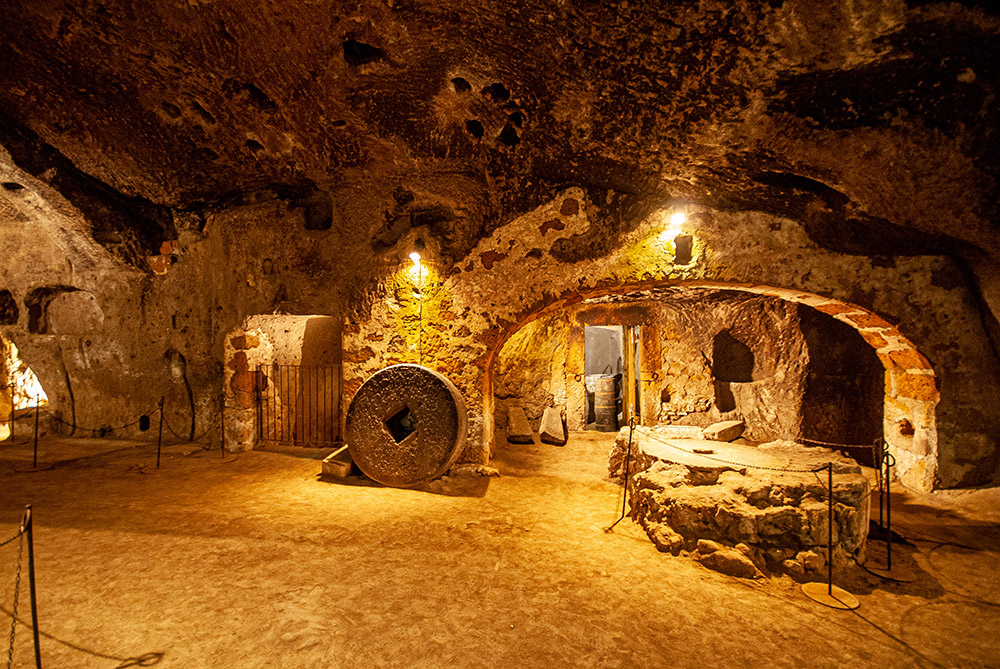
The town’s charming streets are perfect for leisurely strolls, and at the center is the Palazzo del Popolo, presenting an impressive medieval facade. Orvieto’s cuisine features regional delights such as wild boar and truffles, making this enchanting town an unforgettable Italian experience.
Day 8: Florence
Florence, or Firenze as it is known in Italian, is the capital of Italy’s Tuscany region and a treasure trove of art, history, and culture, making it one of the world’s most popular tourist cities. The city’s rich heritage is evident in its architecture, museums, and charming streets. A 2-day visit is highly recommended as the city boasts numerous attractions such as the following key points of interest:
Florence Cathedral (Il Duomo): Santa Maria del Fiore Cathedral, with its iconic red dome designed by Brunelleschi, is a Renaissance architectural marvel. Climb to the top and enjoy a panoramic view of the city. The site also includes the Baptistery with Ghiberti’s “Gates of Paradise” and Giotto’s Bell Tower.
Uffizi Gallery: The Uffizi Gallery, a world-renowned museum, houses an unparalleled collection of Renaissance art.
Accademia Gallery: This is the home of Michelangelo’s legendary statue of David.
Ponte Vecchio: This medieval bridge spanning the Arno River is lined with shops selling jewelry, art, and souvenirs.
Piazza della Signoria: The heart of Florence’s political and social life, this square includes Palazzo Vecchio, sculptures, and the Loggia dei Lanzi, an outdoor sculpture gallery.
Santa Croce Basilica: The burial place of Italian cultural giants such as Michelangelo and Galileo Galilei, this basilica is a stunning example of Italian Gothic architecture.
Pitti Palace: This magnificent palace, once the residence of the Medici family, now houses several museums and beautiful gardens.
Take the train from Florence to Bologna, approximately 1.5 hours. Spend 2 nights in Bologna.
Day 9: Bologna
Bologna seamlessly blends history, culture, and culinary delights. Among the city’s highlights is Piazza Maggiore, home to the Basilica of San Petronio and the historic Archiginnasio library, which houses an anatomy lecture hall. The captivating complex of Santo Stefano, comprising seven churches, is a must-see. Bologna is renowned for its iconic porticoes, ancient covered walkways, which add charm to its streets. Art enthusiasts can explore treasures at the National Art Gallery, the Archaeological Museum, and the unique Ustica Memory Museum. For breathtaking vistas, ascend to the hilltop San Michele in Bosco Basilica. The local cuisine is exceptional, offering delights like tagliatelle al ragù, tortellini, and mortadella.
Day 10
Train from Bologna to Parma, approximately 1 hour.
Parma is a city filled with numerous attractions, and the recommended points of interest are conveniently located close to each other. Highlights include the Cathedral of Parma (Cattedrale di Santa Maria Assunta), a remarkable example of Romanesque architecture featuring mural paintings and impressive artworks, and the Baptistery of Parma (Battistero di Parma), an octagonal structure adjacent to the cathedral, which is a medieval architectural masterpiece adorned with sculptures and beautiful artworks. Teatro Farnese is an extraordinary wooden theater, renowned as one of Italy’s most famous opera houses, providing a unique glimpse into Baroque theatrical design. The Galleria Nazionale di Parma is an art gallery that houses an exceptional collection of paintings, featuring works by artists such as Correggio, Leonardo da Vinci, and Parmigianino.
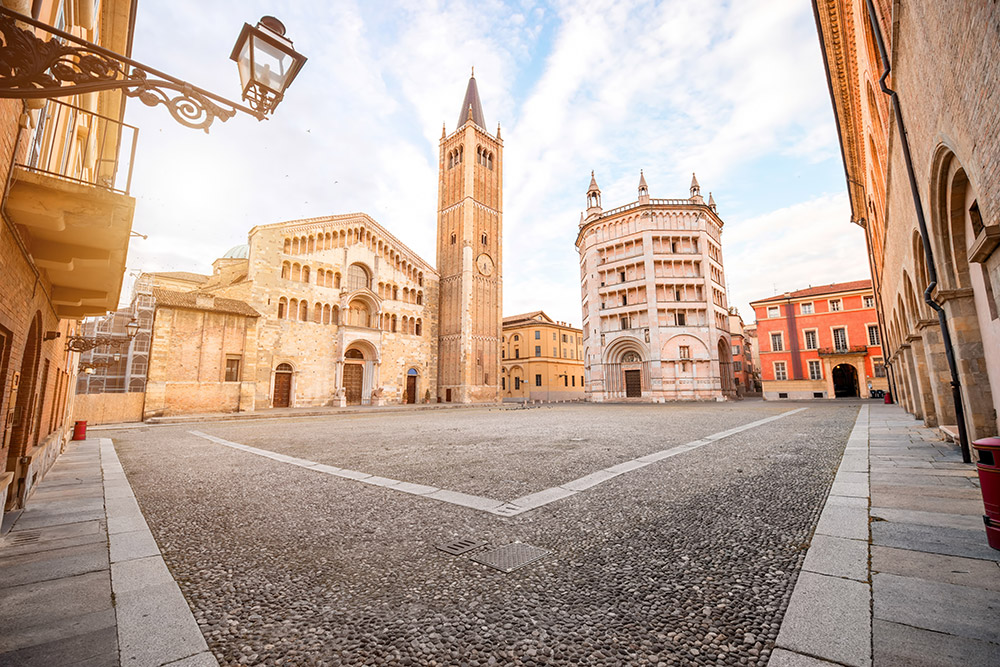
Continue by train from Parma to La Spezia, a journey of approximately 2 hours, and from there catch the train to Cinque Terre.
Cinque Terre is a UNESCO World Heritage site renowned for its picturesque villages nestled between dramatic cliffs, clear waters, and unique walking paths within and between the villages, and exploring the region by train is an outstanding experience. La Spezia is the starting point for this stunning journey. Dedicate a full day to fully appreciate the region’s highlights. The train from La Spezia stops at the following villages:
Vernazza: This charming village includes a picturesque harbor, colorful houses, and the medieval Doria Castle.
Monterosso al Mare: The largest among the five villages, the town is known for its beautiful beaches, ancient church, and scenic streets.
Riomaggiore: This village is famous for its colorful buildings and charming, narrow streets.
Manarola: Experience breathtaking views in Manarola, especially from the Punta Bonfiglio viewpoint, where you’ll be captivated by the colorful houses clinging to the cliffs.
Corniglia: This hilltop village provides a different perspective on Cinque Terre. It is the only village without direct access to the sea. You’ll need to climb stairs to reach it, but the view from the terrace is well worth the effort.
Travel back to La Spezia to spend the night.
Day 11
Train from La Spezia to Sestri Levante, continuing to Portofino, and returning to Sestri Levante (full day excursion). Spend the night in Portofino.
Portofino: Take the train from La Spezia to Sestri Levante, a picturesque town with a delightful bathing beach. Continue by train to Santa Margherita, then by boat to Portofino, a captivating destination that lures millions of visitors each year. Its harbor is decked with luxury yachts, boats, and colorful buildings. The iconic Castello Brown offers panoramic views, while the Church of St. George and the charming Tabburetta Square add to the wonderful historical allure. Beyond short walking trails, the town boasts shops and boutiques for fashion and sea-themed snorkeling gear. Portofino’s lighthouse provides breathtaking views. After the tour, return by boat and train to Sestri Levante.
Days 12 and 13
Train from Sestri Levante to Milan, approximately 2.5 hours. Spend 2 nights in Milan.
Milan is a vibrant and cosmopolitan city with a rich history and an abundance of tourist attractions. Here is a selection of the highlights:
Castello Sforzesco: This impressive 15th century fortress was once the residence of the ruling Sforza family. Today, it houses several museums, and, with its vast courtyards, it is a magnificent sight.
Santa Maria delle Grazie: Visit the church to see Leonardo Da Vinci’s masterpiece, “The Last Supper”.
San Maurizio al Monastero Maggiore: This historic church is renowned for its stunning wall paintings. Often referred to as the “Sistine Chapel of Milan,” it boasts magnificent Renaissance and Baroque art.
Duomo di Milano (Milan Cathedral): This is a breathtaking Gothic cathedral and one of Milan’s landmarks. It boasts magnificent interior spaces as well as panoramic views of the city from its roof.
Galleria Vittorio Emanuele II: This renowned shopping center is famous for its grand architecture, including its glass dome, and exclusive boutiques.
Teatro alla Scala (La Scala Opera House): This 18th century opera house is magnificent and among the world’s most famous.
Afterward, stroll through the bustling shopping district to reach Castello Sforzesco.
Day 14
Train from Milan to Verona, approximately 2 hours.
The regular tour of Verona includes the following attractions:
Arena di Verona: A Roman amphitheater hosting spectacular opera productions in a historic setting.
Casa di Giulietta (Juliet’s House): A literary landmark known as the setting for Shakespeare’s “Romeo and Juliet,” featuring Juliet’s balcony and its famous sculpture.
Piazza delle Erbe and Piazza Bra: Historic and vibrant squares lined with cafes, market stalls, and historical buildings, perfect for absorbing the local atmosphere.
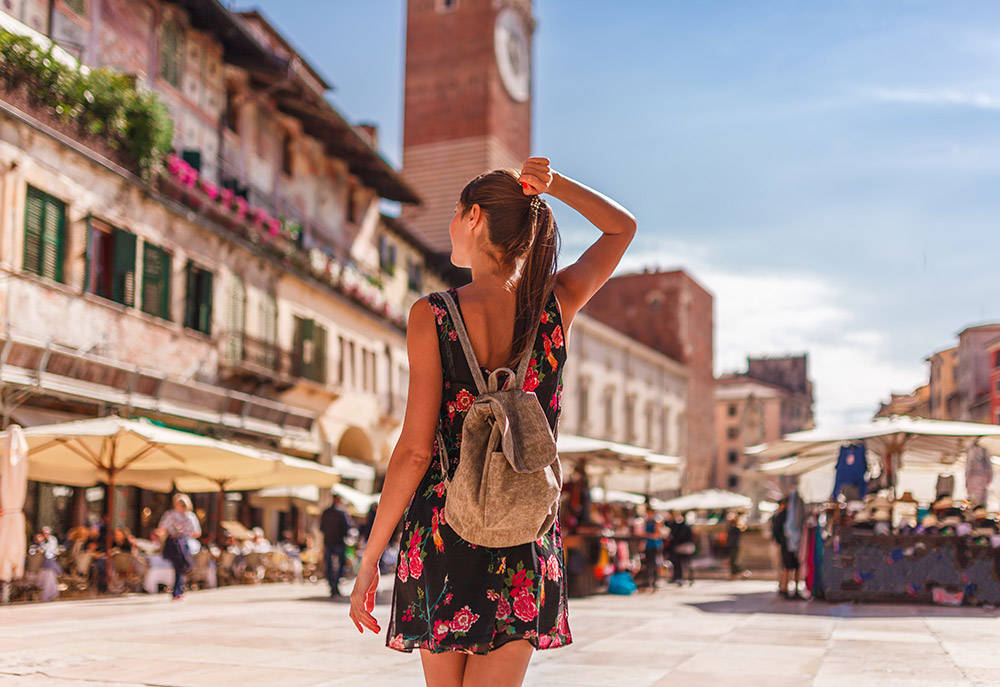
Arche Scaligere: Gothic-style tombstones adorned with symbolic sculptures, commemorating the power of the Scaliger family.
Museo Archeologico al Teatro Romano: Museum displaying ancient artifacts found in the area, providing insights into Verona’s rich Roman heritage.
Castelvecchio: A medieval fortress housing an art museum with a collection of sculptures, paintings, and medieval artifacts within an impressive medieval structure.
Ponte Scaligero: A stunning medieval bridge over the Adige River, known for its arches and beautiful design.
Take the bus to Sirmione, approximately 45 minutes, and spend 2 nights there.
Day 15
Enjoy a leisurely day in Sirmione, a delightful town nestled on a protruding peninsula in Lake Garda. Renowned for its beauty, history, and thermal baths, Sirmione boasts Rocca Scaligera, a 13th-century fortress surrounded by a moat, offering panoramic views from its tower. Stroll through the town’s charming streets filled with picturesque shops, gelaterias, and restaurants, and take a boat ride on the lake or experience the bubbling thermal springs in the area.
Day 16
Short bus ride and train from Sirmione to Padua, approximately 1 hour, 50 minutes. Spend the night in Padua.
Padua is a city with rich history, vibrant culture, and many tourist attractions. We recommend that you start your journey through Padua’s ancient city near the train station and cover the following route: Cross the Ponte del Popolo Bridge to Cappella degli Scrovegni, home to Giotto’s masterpiece within the Scrovegni Chapel – considered one of the most important works in Western art. Continue to the Musei Civici agli Eremitani museum complex that offers a diverse and highly recommended experience. Proceed to Palazzo della Ragione, an impressive medieval palace.
Day 17 – Continued
Take the train from Padua to Arezzo via Florence, approximately 3 hours, 20 min. Spend the night in Arezzo.
Arezzo, nestled in the heart of Tuscany, is a delightful blend of history, culture, and art. The focal point of the city is Piazza Grande, a charming medieval square featuring the Vasari Loggia and the stunning Santa Maria della Pieve church. Explore Casa Vasari, a museum displaying the works of Renaissance artist Giorgio Vasari. Arezzo is also renowned for the Saracen Joust, a captivating medieval tournament held in June and September. Art enthusiasts can marvel at Piero della Francesca’s frescoes in the Basilica of San Francesco. The city’s timeless beauty and cultural richness make it a favorite among travelers.
Day 18
Bus from Arezzo to the cities Perugia and Assisi. Spend the night in Assisi.
Perugia, a city perched atop a hill in Umbria, is renowned for its rich history, vibrant culture, and stunning architecture. The central hub of the city is Piazza IV Novembre, featuring the magnificent Fontana Maggiore and the Gothic-style cathedral. Perugia hosts the annual Umbria Jazz Festival, attracting music enthusiasts from around the world. The historic center is a maze of charming streets, art galleries, and delightful trattorias serving regional cuisine. Don’t miss the National Gallery of Umbria, housing an impressive collection of Italian art—a testament to Perugia’s medieval charm.
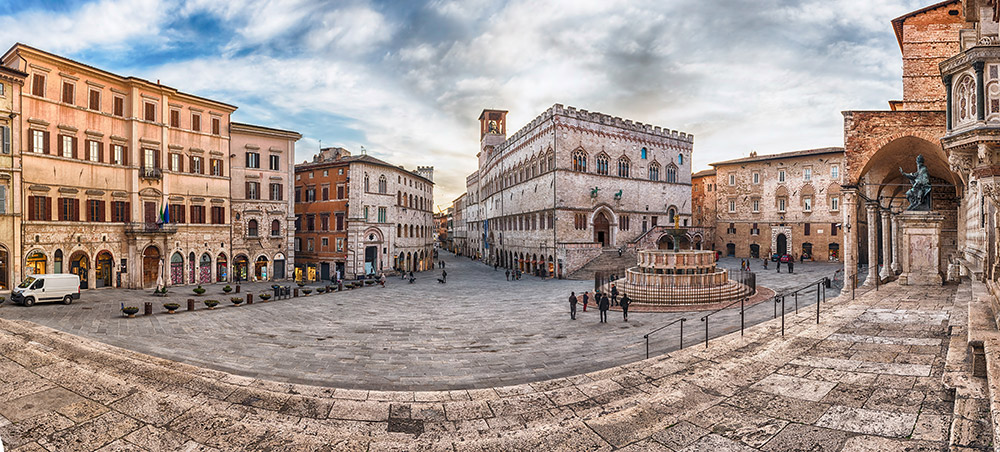
Assisi, a UNESCO World Heritage site, is a picturesque hilltop town known for its spiritual importance, medieval architecture, and scenic landscapes. At the heart of the town is the Basilica of Saint Francis, a masterpiece of Gothic and Romanesque art, housing the tomb of Saint Francis. The basilica is adorned with breathtaking frescoes by Giotto and Cimabue. Assisi’s historic center is a labyrinth of winding streets, medieval buildings, and quaint squares. A visit to the Rocca Maggiore, a fortress with panoramic views, is a highlight. The spiritual ambiance extends beyond the basilicas, with monasteries like Eremo delle Carceri, where Saint Francis sought solitude.
Day 19
Return to Rome: train from Arezzo to Rome, approximately 2.5 hours


